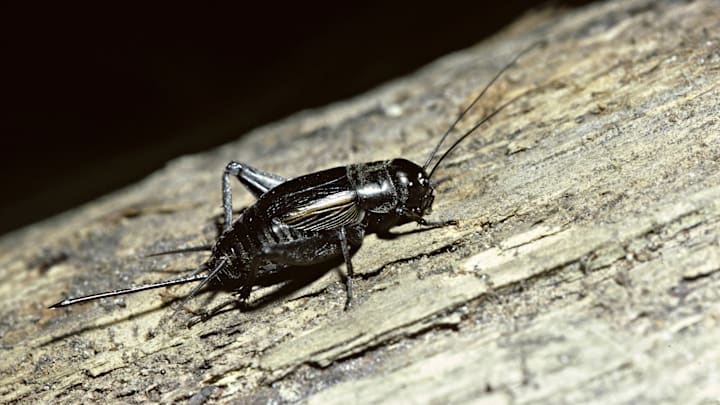A cricket’s chirp is one of the most recognizable sounds in the animal kingdom. The creaky chorus is so ubiquitous on summer nights in certain parts of the world that it has become comedic shorthand for silence. But if you listen closely, you’ll notice that a cricket’s song doesn’t stay the same from one hour to the next. The frequency of their chirps rises with the heat, and you can use them to estimate the temperature wherever you are without a thermometer.
According to The Old Farmer’s Almanac, the American scientist Amos Dolbear first described this quirk of nature in 1897. In his paper “The Cricket as a Thermometer," he observed that the muscles crickets use to chirp move more easily in warmer temperatures than they do in cool weather. This correlation is so reliable that he was able to write a formula connecting ambient temperature to cricket chirp rates now known as Dolbear’s Law.
The principle is simple enough that anyone can use it in their own backyard. When you hear crickets playing their tune, count the number of chirps per intervals of 14 seconds. That number plus 40 is a rough estimate of the current temperature in degrees Fahrenheit. So if you hear a cricket chirping 45 times in 14 seconds, it should be about 85 degrees where you’re standing.
While many people know the sound of a cricket’s song, fewer are familiar with the mechanism that produces it. Contrary to old cartoons, crickets sing with their wings rather than their legs. By rubbing the "scraper" organ on one wing against the "file" organ on the other, they’re able to produce a tone similar to a finger running down the teeth of a comb. You can learn more about the noisy insects here.
